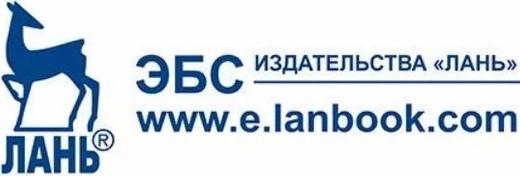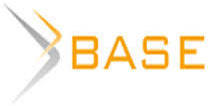COMPUTER MODELLING OF MATERIAL OBJECTS’ STRUCTURE. PART III. CLUSTERING OF NUCLEON SYSTEMS
The structure of light atomic nuclei, such as hydrogen, helium and lithium nuclides, was studied based on the cluster approach. Atomic nuclei are formed as systems consisting of free and bound lovetons, as well as neutron electrons and electron-positron pairs. The work focuses on the mass of the atomic nucleus and its binding energy as the main basic characteristics. There were determined the mechanisms considered binding nucleons into clusters, as well as the main patterns of changes in binding energy depending on the structure of the nucleus.
As part of this study, atomic nuclei were visualized and the dependence of the nuclear binding energy on the number of lovetons, electron-positron pairs and neutron electrons was revealed. The possibility of forming a shell structure of an atomic nucleus consisting of cluster associations of α-particles has been shown. An algorithm for constructing the structure of the atomic nucleus is presented. The conditions for choosing the number of nuclear elements included in the atomic nucleus are determined. As additional results, an estimate of the binding energies of hypothetical hydrogen nuclides 8H and 9H was obtained, and their mass formulas were constructed. The charge radii of a number of hydrogen, helium and lithium nuclides have been calculated. The possibility of using the spiral structure of nuclei instead of the shell representation has been revealed. The nature of the occurrence of the binding energy of the atomic nucleus is explained. Comparison of the obtained values of binding energies and charge radii with experimental data allows us to assert an adequate approach to the formation of the structure of the atomic nucleus.
Bondarev V.G., Migal L.V. Computer modelling of material objects’ structure. Part III. Clustering of nucleon systems // Research result. Information technologies. – Т. 8, №4, 2023. – P. 12-33. DOI: 10.18413/2518-1092-2023-8-4-0-2
















While nobody left any comments to this publication.
You can be first.
1. Littlefield T. A. Atomic and nuclear physics. – New York: Springer US, 2014. – 487 p.
2. Kragh, H. Nuclear physics in the twentieth century: Historical and philosophical reflections. – Princeton: Princeton University Press, 2002. – 494 p.
3. Ishkhanov B.S., Kapitonov I.M., Yudin N.P. Particles and atomic nuclei. – M.: LKI Publishing House, 2019. – 672 p. (in Russian).
4. Neuchudin V.G., Smirnov Yu.F. Nucleon associations in light nuclei. – M.: Nauka, 1969. – 413 p. (in Russian).
5. Wildermuth K., Tang Y.C. A unified theory of the nucleus. – Vieweg. Braunschweig, 1977. – 389 p.
6. Hofstadter R., The structure of nuclei and nucleons // Science, 1962, – Vol. 136. – PP. 1013-1022.
7. Goeppert-Mayer M., Jensen J.H.D. Elementary theory of nuclear shell structure. –New York: Wiley, 1955. – 296 с.
8. Goriely S., Tondeur F., Pearson J. M. A Hartree-Fock nuclear mass table // At. Data Nucl. Data Tables. – 2001. – Vol. 77, No 2. – PP. 311–381.
9. Sobiczewski A., Litvinov Yu.A., Palczewski M. Detailed illustration of accuracy of presently used nuclear-mass models // Atom. Nucl. Data Tables. – 2018. – V. 119. – P. 1-32.
10. Lunney D., Pearson J.M., Thibault C. Recent trends in the determination of nuclear masses // Rev. Mod. Phys. – 2003. – V. 75. – No. 3. – P. 1021-1082
11. Samyn M., Goriely S., Pearson J. Further explorations of Skyrme–Hartree–Fock–Bogoliubov mass formulas // Nucl. Phys. A., 2003, – Vol. 725. – PP. 69–81.
12. Goriely S., Chamel N., Pearson J.M. Further explorations of Skyrme-Hartree-Fock-Bogoliubov mass formulas // Phys. Rev. C., 2013, – Vol. 88, – No 2. – PP. 1–14.
13. Kurgalin S.D. Neutron clusters in nuclei / S.D.Kurgalin, Yu.M.Chuvilsky // Izv. AN. Ser. phys., 2003, – Vol. 64, – No. 5. – PP. 700-703 (in Russian).
14. Rodkin D.M., Chuvilsky Yu.M. Description of cluster phenomena in the spectra of light nuclei within the framework of the ab initio approach // Letters in the JETF, 2018, – Vol. 108(7). – PP. 459-465 (in Russian).
15. Kadmensky S.G., Kadmensky V.G. Cluster Degrees of Freedom and Nuclear Reactions and Decays // Cluster Phenomena in Atoms and Nuclei. В. – Springer, 1992. – PP. 525-539.
16. Bettini А. Introduction to Elementary Particle Physics. – Cambridge: University Press, 2008. – 447 p.
17. Jolos, R.V. Models of atomic nuclei. – Dubna, OIYAI, 2012. – 107 p. (in Russian).
18. Ishkhanov B.S. Atomic nuclei // Physical Bulletin of the Moscow University. – 2012, – Volume 67. – pp. 1-24.
19. Rowe D.J., Wood J.L. Fundamentals of nuclear models: foundational models. World Scientific, Singapore, 2010. – 676 p.
20. Kislov A.N. Atomic and nuclear physics. Yekaterinburg: Ural Publishing House. unita, 2017. – 271 p. (in Russian).
21. Nemirovskii P.E. Contemporary models of the atomic nucleus. – New York: Elsevier, 2013. – 344 p.
22. Calculator and Graph Engine for Atomic Nuclei Parameters / The Centre for Photonuclear Experiments Data of the Moscow State University. Access mode: URL: http://cdfe.sinp.msu.ru/services/calc_thr/calc_thr.html.
23. Myers W.D., Swiatecki W.J. Nuclear masses and deformations // Nucl. Phys., – 1966, – Vol. 81, – No. 1. – PP. 1-60.
24. Wigner E. On the Consequences of the Symmetry of the Nuclear Hamiltonian on the Spectroscopy of Nuclei // Phys. Rev., 1937, – Vol. 51, – No. 2. – PP. 106-119.
25. Wong S.S.M. Introductory Nuclear Physics. – WILEY-VCH Verlag Gmbl I & Co. KGaA, Weinheim, 2004. – 473 p.
26. Garvey G.T., Kelson I. New nuclidic mass relationship // Phys. Rev. Lett. 1966. – Vol. 16. – PP. 197-200.
27. Möller P., Nix J.R. Nuclear mass formula with a finite-range droplet model and a folded-Yukawa single-particle potential // At. Data Nucl. Data Tables, 1988, – Vol. 39, – No. 2. – PP. 225-233.
28. Möller P., Sierka A.J., Ichikawab T., Sagawac H. Nuclear ground-state masses and deformations: FRDM (2012) // At. Data Nucl. Data Tables, 2016, – Vol. 109/110. – PP. 1-204.
29. Migal L.V., Bondarev V.G. Computer visualization of the spatial structure of the atomic nucleus // Research result. Information technologies. – Т.7, – №2, – 2022. – PP. 3-18 (in Russian).
30. Rainwater J. Background for the spheroidal nuclear model proposal. – Nobel Lecture, Stockholm, 1975. – PP. 1-13.
31. Cook N.D. Models of the atomic nucleus: unification through a lattice of nucleons. – Springer-Verlag: Berlin, Heidelberg, 2006. – 291 p.
32. Nasser G.A. Body-centred-cubic (BCC) lattice model of nuclear structure. Access mode: URL: https://vixra.org/pdf/1312.0184v1.pdf
33. Feldman G. Why neutrons and protons are modified inside nuclei // Nature, 2019, Vol. 566, No. 7744. – P. 332-333.
34. Wildermuth K., Tang Y.C. A unified theory of the nucleus Braunschweig, 1977. – 389 p.
35. Solovyov V.G. Theory of the atomic nucleus: Nuclear models. – M.: Energoatomizdat, 1981. – 296 p. (in Russian).
36. Ishkhanov B.S., Stepanov M.E., Tretyakova T.Y. Pairing of nucleons in atomic nuclei // VMU. Series 3. Physics. Astronomy, 2014. No. 1. – pp. 3-19. (in Russian).
37. Bondarev V.G., Migal L.V. Computer modelling of material objects’ structure. Part II. Elementary particles // Research result. Information technologies. – Т.8, – №1, 2023. – P. 3-22. (in Russian).
38. Wang M. The AME 2020 atomic mass evaluation (II). Tables, graphs and references // Chinese Phys. C, Vol. 45, – No. 3, – 2021. – 513 p.
39. Bohr A., Mottelson B.R. Nuclear structure. Vol. 1. Single-particle motion. – New York: W.A. Benjamin, Inc., 1969. – 471p.
40. NIST Handbook of Constants, Units of Measurement and Uncertainties. – Access mode: URL: www.nist.gov.
41. Khabarova K.Yu., Kolachevsky N.N. The charge radius of a proton // UFN, 2021, – Vol. 191, – No. 10. – PP.1095-1106. (in Russian).
42. Agneli I., Marinova K. P. Table of experimental nuclear ground state charge radii: An update // At. Dat. Nucl. Dat. Tab. – 2013, – Vol. 99, – No. 1. – PP. 69-95.